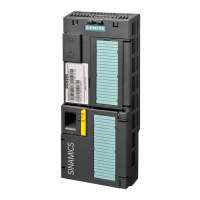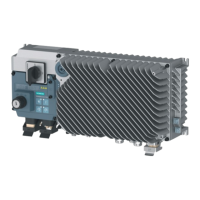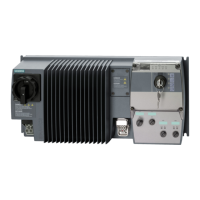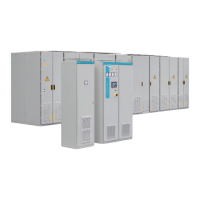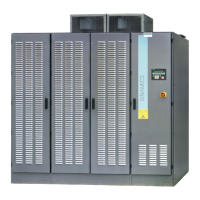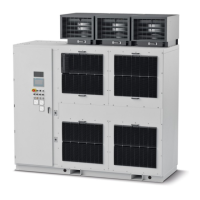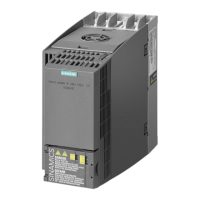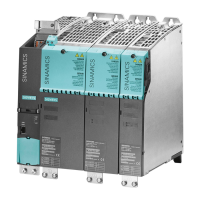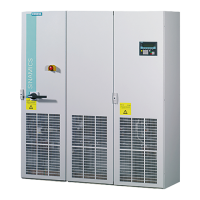Functions
7.6 Motor control
Inverter with CU240B-2 and CU240E-2 Control Units
172 Operating Instructions, 07/2010, FW 4.3.2, A5E02299792B AA
7.6.1.3 Optimizing with a high break loose torque and brief overload
The ohmic losses in the motor stator resistance and the motor cable play a more significant
role the smaller the motor and the lower the motor speed. You can compensate for these
losses by raising the V/f characteristic.
There are also applications where the motor temporarily needs more than its rated current in
the lower speed range or during acceleration in order to adhere to the speed setpoint.
Examples of such applications are:
● Driven machines with a high break loose torque
● Utilizing the brief overload capability of the motor when accelerating
Voltage increase in V/f control (boost)
)UHTXHQF\
9ROWDJH
5DWHGIUHTXHQF\
5DWHGYROWDJH
I
9
3
3
3
Figure 7-5 Voltage boost using a linear V/f characteristic as an example
Voltage losses resulting from long motor cables and the ohmic losses in the motor are
compensated for using parameter p1310. An increased break loose torque when starting
and accelerating is compensated using parameter p1312 and/or p1311.
The voltage boost is active for every characteristic type of the V/f control.
Note
Only increase the voltage boost in small steps until satisfactory motor behavior is reached.
Excessively high values in p1310 ... p1312 can cause the motor to overheat and switch off
(trip) the inverter due to overcurrent .

